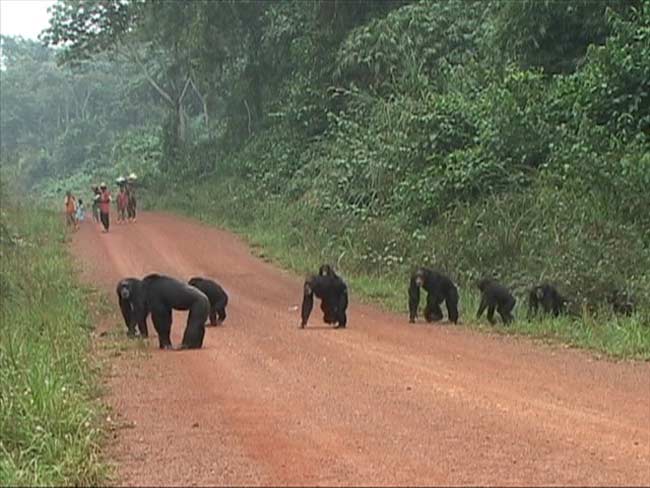Wild Chimps Use Crossing Guards

Elementary school children aren't the only ones who need crossing guards. Scientists report that wild chimpanzees safely cross roads with the aid of adult males that serve as traffic patrollers.
Dominant male chimpanzees walk ahead of their groups and evaluate risks of crossing a road before signaling the rest of the crew to move ahead. Other alpha males—the leaders of the bunch—bring up the rear to protect adult females and the young positioned in the more protected middle areas. [Photo]
Researchers studied how a small group of chimps at Bossou, the Republic of Guinea, in West Africa, moved around in a 3,706-acre forest surrounded by farm fields.
In order to reach their foraging sites, the chimps had to use two roads that dissect the forests: one nearly 10 feet wide traveled only by pedestrians, the other a 40-foot-wide road frequented by cars, motorbikes, trucks, and people on foot.
At each crossing, the position of the stronger and bolder adult males changed depending on the degree of risk and the number of other strong males present in the group. This suggests that dominant individuals coordinate with each other to maximize group protection, the researchers write in the Sept. 5issue of the journal Current Biology.
This knowledge helps scientists understand how social organization emerged in hominoids, a family of primates that humans belong to.
A video of the chimps crossing the road in front of onlookers is available here.
Get the world’s most fascinating discoveries delivered straight to your inbox.

